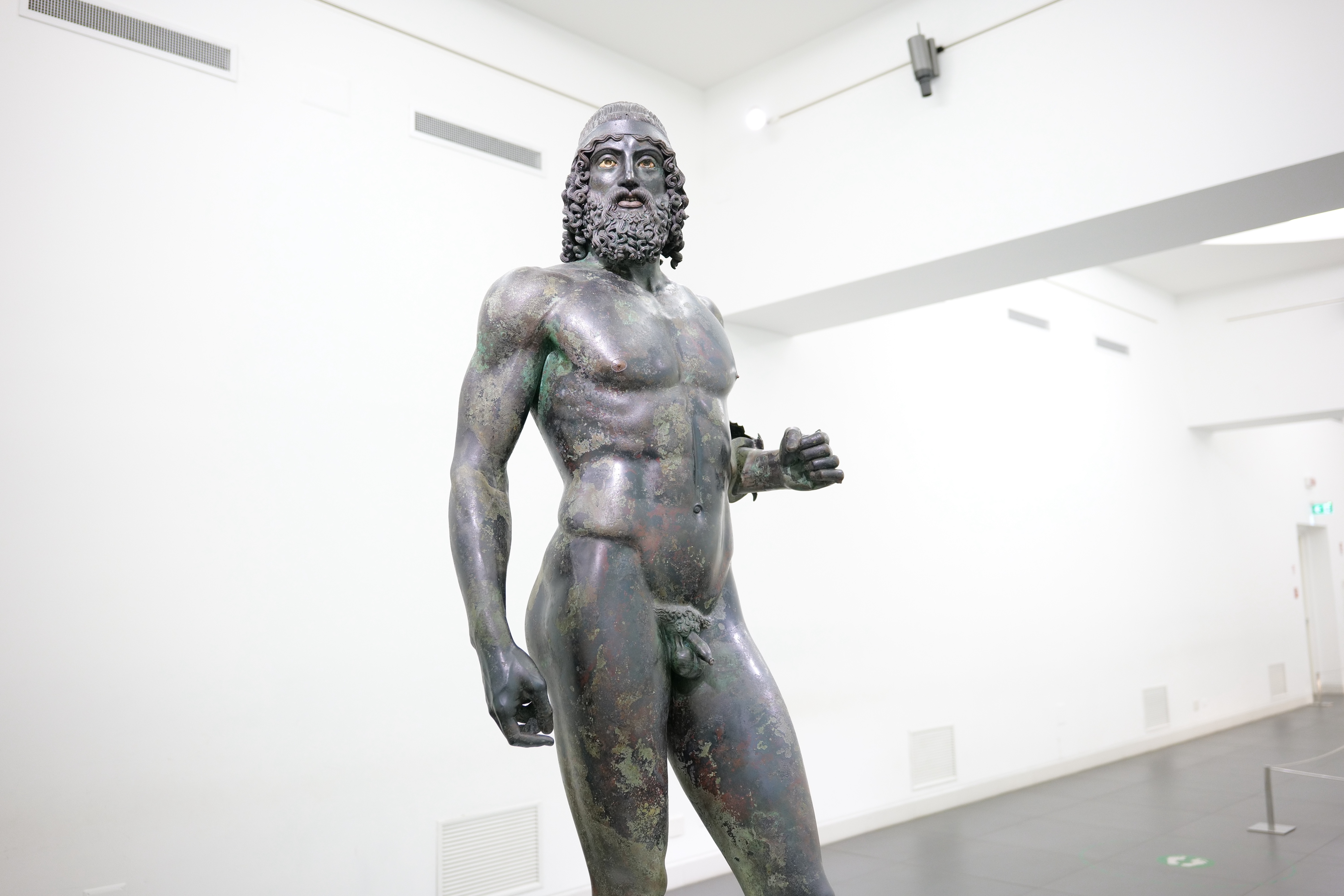The Riace Bronzes: history, discovery and curiosities
Riace Bronzes: finding, history and curiosities at the National Museum of Reggio Calabria

Art and Culture
Bronzi di Riace - Regione Calabria
We all hold in our imagination the Riace Bronzes, the iconic symbol of Calabria and Magna Graecia in the world, but what do we really know about these exceptional statues?
Every time the story of the Riace Bronzes is told, it seems as if we are hearing it for the first time. There is something about the tale of the recovery of the Riace Bronzes that makes it unique, like a fairy tale you would never stop listening to.
Once upon a time there were two statues lying on the bottom of the Ionian Sea, off the coast of Riace (RC), waiting for someone to notice them: they were the Riace Bronzes, where are they today?
History of the Bronzes: finding and recovery
The history of the Riace Bronzes and their discovery is as troubled as it is fascinating.
It was in the summer of 1972, 16 August to be exact, when a young Roman diver named Stefano Mariottini, on holiday in Calabria, spotted something about 300 metres off the coast of Riace and 8 metres deep: two large naked figures lying on the seabed. He reported the discovery to the Superintendency and a case broke out: the young diver had stumbled upon one of the most important archaeological discoveries in history, destined to be an adventure without end.
The Riace Bronzes, finding and recovering them, proved to be problematic right from the start.
The ‘heroes from the sea’ or Riace Bronzes, as the statues are called, are identified as apparently well-preserved bronze giants. However, their recovery is fraught with pitfalls: the statues weigh, escape, lose pieces, some advance the hypothesis that they were part of a stolen group, others claim their discovery before Mariottini.
What is certain is that the Riace Bronzes are in need of immediate restoration, as they are much more fragile than initially thought.
The two ‘heroes/warriors’ set off for a new home, which would not, however, be the definitive one: subjected to an initial intervention (1975-80) at the Opificio delle Pietre Dure in Florence to remove the marine concretions and melting earth (dropping from the 400 kilos of the repossession to the current 160 kilos), the Riace Bronzes almost didn't return to Calabria, the subject of a long dispute between the bodies in charge of their protection.

The second intervention (1992-95) is carried out in Reggio Calabria, by the experts of the then ICR, and proves to be as complex as it is fundamental for the preservation of the Riace Bronzes, both from the point of view of preservation and knowledge: exhibited for the first time at the National Archaeological Museum of Reggio Calabria in 1981, the Bronzes are hoisted on two earthquake-proof display bases and placed in a protected environment.
Riace Bronzes: where they are
Where are the Riace Bronzes today? Still at the National Archaeological Museum in Reggio Calabria, but in an innovative space, specially designed to save their now delicate state of preservation.
The subject of a third restoration, carried out at the same time as the renovation of the entire host building, the historic Palazzo Piacentini on Piazza De Nava, the Riace Bronzes have undergone further work on their surfaces and are on display on the ground floor. Before entering their room, visitors are asked to spend a few seconds in a hyperbaric chamber, in which any smog and impurities are removed.

Riace Bronzes: what they represent
Classified as ‘A’ and ‘B’, alias the ‘Old’ and the ‘Young’, the Riace Bronzes represent two naked warriors (‘heroic nudity’), respectively 1.98 and 1.97 metres tall and weighing 160 kg.
The basic interpretation of ‘warriors’ emerges from the attributes that characterise the statues: armed with a shield (harnessed with the left), spear (with the right) and helmet. The mighty musculature is rendered with strong plastic vigour: anatomical details include the veins on the hands and feet, the mother-of-pearl of the eyes and the nipples, which are worked separately and applied by hammering.

From a static point of view, the Riace Bronzes present a cross-rhythmic weighting system: the weight of the body rests on the upright right leg, which is counterbalanced by the bent left arm; vice versa, the flexed, forward left leg corresponds to the lowered right arm gripping the pole.
Studies over the years have dated the Riace Bronzes to the mid-5th century BC.
Archaeometry has made it possible to establish with certainty that the Riace Bronzes were made in Argos, in the Peloponnese, and that they were transported on a ship to imperial Rome at the time, to which they were destined before being shipwrecked.
Riace Bronzes, curiosities and hypotheses?
According to some scholars, the pair may have been part of a much more articulated statuary group, possibly representing the Seven against Thebes: specifically, the brothers Eteocles and Polynices, sons of Oedipus.
https://calabriastraordinaria.it/en/news/the-riace-bronzes-history-discovery-and-curiosities





